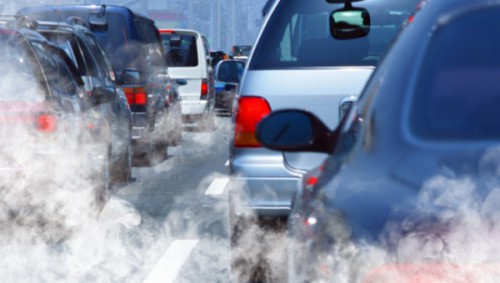

By Emmett Chan
SACRAMENTO, CA — The California Air Resources Board (CARB) announced on Aug. 25 its ban on new sales of gasoline cars and light trucks by 2035, an ambitious measure stemming from governor Gavin Newsom’s 2020 Executive Order N-79-20.
However, these requirements are not yet in effect, because they require approval from the Environmental Protection Agency (EPA).
It is at this point—as the prospective gas car ban awaits confirmation—that American citizens begin to seriously consider whether such a ban would be beneficial.
CARB’s announcement groups electric and hydrogen fuel cell vehicles as ZEVs, separating them from PHEVs, but places certain restrictions on the sales of PHEVs:
“PHEVs must have an all-electric range of at least 50 miles under real-world driving conditions. In addition, automakers will be allowed to meet no more than 20% of their overall ZEV requirement with PHEVs.”
While ZEVs may have zero tailpipe emissions, the processes needed to fuel and produce ZEVs still cause emissions.
EVs release energy without combustion and burn no fuel, so they emit no carbon dioxide while being driven.
However, economist Vaclav Smil deems EVs “battery vehicles reflecting the electricity’s origins” to highlight that the power needed to charge EVs comes from electricity grids that are often at least partially based on fossil fuels.
By the same token, the production and transportation of hydrogen fuel generates emissions, even though hydrogen fuel cell vehicles produce no emissions themselves.
Also, cars themselves—regardless of their energy source—are contributors to pollution, Smil explains.
“Indirect energies going into the production of steel, plastics, glass and batteries are still mostly fossil fuels, because the world’s primary energy use is now still 83% dependent on fossil carbon.”
Moreover, additional energy is needed to create an EV’s battery, meaning that EV production generates more emissions than production of gas cars.
However, ZEVs are far superior to gasoline vehicles in terms of their environmental impact.
In general, EVs still produce less carbon pollution than gas cars when accounting for the electricity used for charging, meaning that they cause less emissions over their lifetime—including the manufacturing process.
Specifically, California’s electricity is 60 percent derived from renewable sources, further cementing EVs as greener alternatives to traditional vehicles.
As for hydrogen fuel cell vehicles, the Argonne National Laboratory (ANL) found that among the most common processes for hydrogen fuel production and transportation, eight out of ten reduced greenhouse gas emissions relative to gas vehicles.
In many ways, CARB’s prospective gas car ban is promising in terms of reducing drivers’ reliance on petroleum gas, and eventually ushering in a full transition to ZEVs and PHEVs.
“California has good reason to want to speed up its transition to electric vehicles (EVs),” an Economist article claims. “The state is car-crazy. About 41% of its greenhouse-gas emissions come from transport, compared with 27% nationally.”
There are three primary options to help phase out gas vehicles:
Taxing carbon emissions from gas cars would function as a “carbon price.”
Subsidies would require the state government to help pay for ZEVs and ZEV infrastructure to incentivize their production and sales.
Prospective bans, like CARB’s, set deadlines for the ban to be met at future dates.
“It is easy to see why politicians are attracted to prospective bans,” explains The Economist’s finance & economics section. “They sound tough and neither impose immediate hardship on consumers, as a carbon price would, nor drain the treasury, as subsidies do.”
Not only is the ban prospective, allowing for an adjustment period, it intends to incrementally increase the proportion of ZEVs, acknowledging that the adjustment period will be difficult. It provides stages of transition, rather than expecting sudden change.
Reuters reports: “The rules mandate that 35% of the new cars sold be plug-in hybrid electric (PHEV), EVs or hydrogen fuel cell by 2026. That proportion will rise to 68% by 2030 and 100% by 2035.”
Hydrogen fuel cell cars are promising, but their availability and infrastructure is in its early stages. Thus, the discussion around CARB’s gas car ban centers primarily around electric vehicles.
While EV infrastructure—namely, charging stations—is far more developed, it must be greatly expanded in order to accommodate a transition from gas cars.
But without a form of stimulus, such as a ban, The Economist explains that “charging stations are subject to a chicken-and-egg problem: when there are few electric cars on the road, there is little incentive to build new stations, which in turn depresses demand for the vehicles.”
A ban would resolve this dilemma by promising the eventual elimination of petrol vehicle production—new stations could be built knowing that electric vehicles will become increasingly common on the road.
Other aspects of infrastructure would also be shifted toward EVs, The Economist adds: “Carmakers may feel more comfortable shifting the bulk of their r&d spending towards electric vehicles, for instance, and mechanics might start preparing to service electric cars. Meanwhile, the investment in services linked to petrol-powered vehicles would shrink rapidly.”
However, most of the ban’s benefits depend on the firm expectation that gas cars will be eliminated.
If manufacturers do not have full confidence that the state government will go through with the gas car ban, they may not make the necessary changes—and there are reasons to doubt the firmness of the ban.
A Washington Post opinion piece argues: “First, the rule relies on a federal waiver that allows California to set its own emissions standards. The Trump administration rescinded that waiver in 2019, and though President Biden reinstated it in March, a future Republican administration can always decide to revoke it once again. The waiver also could be challenged in the courts.”
Opposition such as judicial challenges to the waiver could be easily triggered if the ban were to be enacted.
The Economist cites an incredibly similar situation, providing strong precedent for rules regulating ZEV sales being changed when manufacturers did not change in time:
“A mandate introduced by Californian regulators in 1990, specifying that zero-emission vehicles should account for 2% of annual sales by 1998, rising to 10% by 2003, was revised substantially in 1996 when it became clear that the cost and performance of batteries were not improving fast enough to meet the targets.”
The manufacturers may have simply been unable to develop the technology, or intentionally limited their spending on the project in hopes of getting the rules changed.
Either of these possibilities could easily emerge following the gas ban.
EVs need to make the drastic transition from 16 percent of new automobile sales to at least 80 percent—because PHEVs can be 20% of ZEV sales—in less than 15 years.
But the Washington Post opinion piece observes, “Though manufacturers are working on more affordable options, they have been slow to build models for non-luxury segments of the market.”
The piece also highlights infrastructural challenges that make the ban’s expectation unrealistic, even if manufacturers were to attempt in earnest:
“California has 80,000 charging stations, the most in the country, but is falling behind its target of 250,000 by 2025. The bipartisan infrastructure bill allocated $7.5 billion for states to build up this infrastructure, and Californian regulators hope the promise of a guaranteed market will incentivize private actors to do more. But there is a lot to be done, particularly in rural areas. There are also concerns over supply chain stability for materials such as the lithium used in batteries.”
A NPR article elaborates on the chain supply issues, explaining that “China currently dominates the rare earth mineral market and the auto industry has long relied on the country to source EV batteries.”
“Something in the order of about 90% of the lithium that’s used in batteries is processed in China right now, which is not a desirable situation,” says Sam Abuelsamid, an analyst with Guidehouse Insights.
If some or all of the deadlines are not met—for instance, if by 2026 the state does not reach the 35% benchmark—no amount of belief will allow the CA government to wish its vehicle emissions goals into existence.
The state will have to cave and revise the law or force a penalty—perhaps a substantial fine—on manufacturers. Either outcome is suboptimal.
The Washington Post suggests “an ambitious, steadily rising price on fuels would encourage the transition to electric vehicles and greener public transportation systems without the downsides of a regulatory ban.”
The Economist agrees, considering “a carbon tax, which would induce a complete transition to electric vehicles” as ideal.
But the tax should give the state more time to adjust, it should rise in more gradual increments—but not slowly enough to enable inaction. Creating a more realistic yet pressing timeline would encourage firmer action.





Mr. Chan makes a compelling case for a carbon tax over an incremental requirement and eventual ban of all gas powered vehicles in California. Of course Republicans oppose all efforts in this area because they are climate change deniers despite ample evidence throughout the US to the contrary. The revenue derived from a carbon tax should be dedicated towards improving the electric charging infrastructure, particularly in rural parts of the State.
A CA state carbon tax, a great way to drive even more businesses out of California to Texas and other states.
And that will only add to businesses packing up and leaving CA.
The carbon tax will result in more Republican residents leaving California, but I could care less. That will reduce housing costs for the people that remain. California will still be attractive to many because of its scenic beauty unlike barren states such as Texas, Arizona and Nevada. The vast majority of Democrats will stay because they realize that the devastating effects of global warming require swift decisive action to combat it.
Unlike the “scenic Sacramento/central valley”, I guess.
I take it that you haven’t been to Arizona or Nevada, much. For example, the Sierra rises quite dramatically from the Nevada side, and is much closer and more accessible to population areas. And since much of the land is at a higher elevation than the central valley, it also doesn’t usually reach 116 degrees – like it does in Sacramento.
Ever been to Sedona? The Grand Canyon?
Don’t know about Texas, as much.
Right, because it’s only Republicans that need jobs and work at the businesses that will be leaving California. LOL
Businesses are not fleeing California. Net business growth in California has been above the US average for decades. Number of businesses grew from 1,599,165 in 2019 to 1,665,060 in 2021 or 4%. https://www.labormarketinfo.edd.ca.gov/LMID/Size_of_Business_Data.html
When California loses a Tesla but opens up a mom and pop taco stand it’s still counts as the same number of businesses but it’s a huge loss for the state. It’s not difficult to understand.
https://patch.com/california/paloalto/42-companies-left-california-2021
Is that a lot? Is that unusual? We have no baseline. It’s a five year period overlapping a once-in-a-lifetime disruption.
Also, glancing at the article you posted, it noted the cost of housing – something that is at odds with your views on land use. Maybe this is a topic that needs more delving into than a one-liner?
Oh believe me, the Vanguard has delved into that topic to the point that its readers eyes are crossed.
The point being – you are complaining on the one hand about businesses leaving and on the other ignoring a chief reason for it…
We all know there are many more reasons for why businesses are leaving. It’s not just the cost of housing and you know it. Sky high state taxes, over regulation, and the fact that businesses feel they can no longer count on California’s energy systems especially with the coming mandates.
In reference to the article that Keith posted, this is mentioned:
But if I find this comment even more applicable (from Elon Musk):
And this one, as well (from the governor):
Those two comments are probably the most spot-on.
Let them move (especially their manufacturing), as they expand. That’s not going to be prevented, regardless.
Keith O
Your citing to anecdotes, not data. The data also shows that California’s GDP has consistently outgrown the US average, which means that the businesses that are being added are bigger on average than the rest of the US. https://www.bloomberg.com/opinion/articles/2021-06-14/california-defies-doom-with-no-1-u-s-economy
You’re entitled to your own opinion, but not your own facts. That California businesses are exiting en masse is a myth that those who are unhappy with the state’s environmental policies want to believe. This myth has been rolled out for decades, starting at least in the early 1980s, yet California’s economy continues to grow faster than the nation’s and to climb in the world ranking of political jurisdictions.
I read the original Hoover Study people are referring to, but it read a lot less like a rigorous academic study and a lot more like a polemic.
Longer term, I think California is actually far ahead of the curve on adjusting to climate change and suspect that places like Texas at some point are going to get hammered because the situation is so bad and the impact on a place like Texas is going to be far greater than they expect/ or even fear.
The trend is not your friend:
Apple, Nestle, Oracle and Tesla, just to name a few. And as the article states, it’s just the start.
And when businesses move their headquarters out of state, they also pay taxes out of state. The moving of so many company headquarter out of CA is a big deal. California is ranked 49th out of 50 for the worst business environment in the U.S. So Richard, how’s them facts?
Richard’s pointed that the underlying fundamentals of the California economy remain strong. I have pointed out that some of these studies aren’t based on what I would call objective science. You keep reposting other people’s work with out addressing the underlying points raised by either Richard or myself.
That’s kind of funny coming from you. Your articles are quite often based on other people’s work.
You’ve completely dodged the issue (again) – right wing sources continue to point to business flight, but is there any actual evidence that this is impacting the California economy? Because from the measures I have seen while anti-tax people can cite that number, California is at the top in economic growth, income, etc. So perhaps you can do something other than simply cut and paste and address the substantive points that have been made.
I also find it extremely ironic that you are complaining about businesses leaving the state, when you have twice voted against creating space to retain businesses in town – if not the state – because you don’t like waiting in traffic.
So apparently, “high housing prices” in California aren’t holding back business/economic growth, either.
The Economist has long been an overly ardent advocate for economic pricing instruments to accomplish policy goals. I have sympathy as an economist, but the consensus in the profession now is that a carbon tax is politically infeasible and may even not be the preferred pathway. Even one of the strongest advocates for carbon pricing, Severin Borenstein at UC Berkeley, came out recently with an article showing that other options could be preferrable: https://energyathaas.wordpress.com/2022/07/25/is-taxing-carbon-really-the-best-way-to-decarbonize-the-grid/
This article also gets two important facts wrong about California’s ability to set it’s own standards. First the US EPA’s authority to approve these standards is pro forma under the current rules so there’s no question that they will be approved. And second the Trump Administration’s attempt to revoke the authority never actually made it into force due to various lawsuits. That decision has now been reversed: https://www.reuters.com/markets/commodities/us-reverses-trump-effort-quash-california-vehicle-emissions-rules-2021-12-22/
Finally, auto manufacturers are working hard to meet burgeoning EV demand. Ford had to boost its planning Ford F-150 Lightning production run from 80,000 to 200,000. (You can see this and other EV models at the UCD ARC this coming Saturday as part of Cool Davis’ EVs@thePavilion) Other manufacturers are introducing new models constantly. Much of this production is headed for states, such as Texas, that do not have EV mandates or incentives.
More news, two other states following California:
https://www.smartcitiesdive.com/news/massachusetts-washington-confirm-plans-end-gas-car-sales-2035/632278/
You know what’s really interesting?
“Businesses leaving California” isn’t the topic of this article.